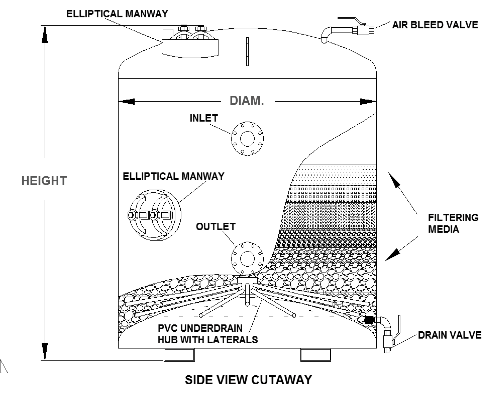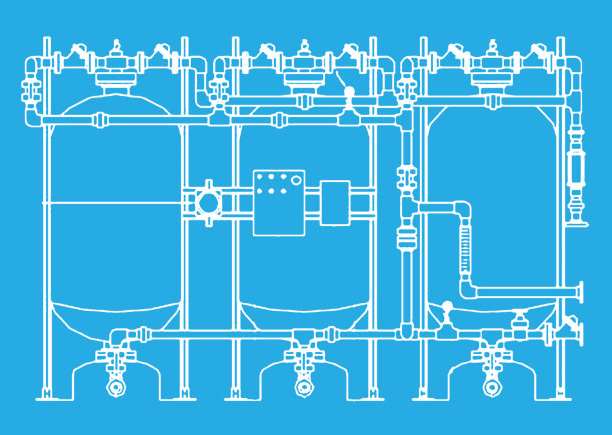Polishing Filter
A polishing filter is specifically designed to remove or reduce suspended solids (20 microns or greater) by 90% via filtration. More significant solids loading and/or finer particle removal can be achieved by using alternate media beds. Special media is selected per application to achieve the highest quality effluent while sustaining low-pressure drop across the filter. There are two main types of polishing filters used in Industrial Wastewater Treatment. These include Mechanical Filters and Chemical Filters.
Polishing Filter - Mechanical Media
Mechanical media is the first phase in polishing filtration. The wastewater passes through a fine grade of media such as sand, beads, or gravel to remove large, visible particulates. Mechanical media can be dense or loose depending on what needs to be removed from the wastewater. It is the material that allows the water to flow through the media.
Polishing Filter - Chemical Media
Chemical media removes the things the wastewater effluent that are not visible but can lead to noncompliance. There are numerous chemical media that can be used to remove your pollutant of concern.
Available Options
- Activated Carbon
- Walnut Shell Media
- Ion Exchange Resin Beds
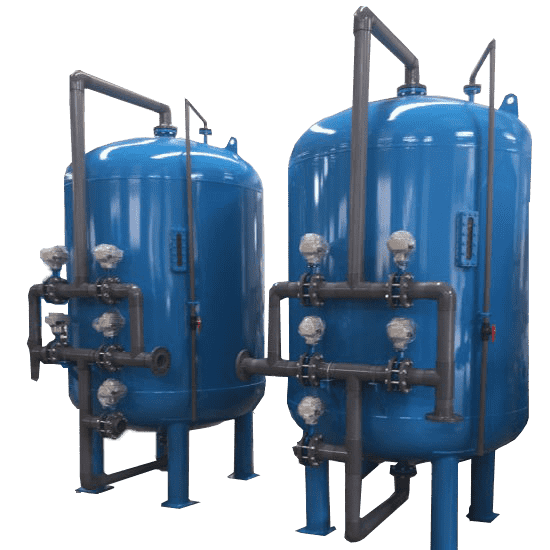
Chemical Media Can Remove Pollutants such as:
-
Water Hardness
-
Iron and Manganese
-
Heavy Metals
-
Toxic Organic Chemicals
-
Petroleum Hydrocarbons
Industrial Polishing Filter - How it Works
Feed Water enters each vessel, passes through a selected media bed where suspended solids are filtered out. Filtered water leaves each vessel and continues out through the filtered water valve. The filtration process is automatic with the water feed brought to the system using a feed pump.
Captured solids are backwashed one vessel at a time per operator input, differential pressure or a timed basis. Backwash is achieved by using the filtered water from two of the vessels and diverting over to the remaining vessel. All vessels are backwashed in sequence and the filtration process continues while in the backwash cycle. An independent backwash water supply is not required.
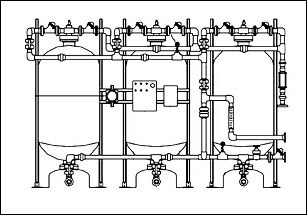
Applications
-
Industrial Process Water
-
Produced Water
-
Groundwater
-
Cooling Water Filtration
-
Dissolved Air Flotation (DAF) Effluent Polishing
Applications
-
Inclined Plate Clarifier (IPC) Carryover Removal
-
Industrial Return Water Polishing
-
Iron Precipitate
-
Pre-Carbon Treatment
-
Many, Many more applications.
Multi-Media Filters
A multi-media filter is similar to a sand filter but may sometimes be more efficient. A multi-media filter has one or two media layers above the gravel bed. The media are ordered in decreasing porosity. Larger, lighter media stays on top and the denser, smaller media stays on the bottom. The largest particles are removed near the top of the media bed, and as particles get smaller, they are captured deeper and deeper in the media. Multi-media filters trap more particles than sand filters before needing backwashing.
Media Applications for Polishing Filters include activated carbon, water softening resins, iron and manganese removal, heavy metals removal. And trace organics and dyes.
Leave Solids Behind
Similar to a home filtration system, the Polishing Filter retains solids as the water flows through different filter media.
Continued Performance
The valving configuration on the Polishing Filter allows it to remain in continuous operation even while backwashing.
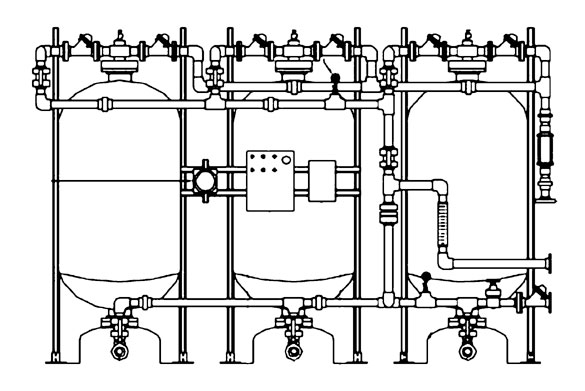
How it Works
Feed enters each vessel, passes through a selected media bed where suspended solids are filtered out. Filtered water leaves each vessel and continues out through the filtered water valve. The filtration process is automatic with the water feed brought to the system using a feed pump.
Captured solids are backwashed one vessel at a time per operator input, differential pressure or a timed basis. Backwash is achieved by using the filtered water from two of the vessels and diverting over to the remaining vessel. All vessels are backwashed in sequence and the filtration process continues while in the backwash cycle. An independent backwash water supply is not required.
